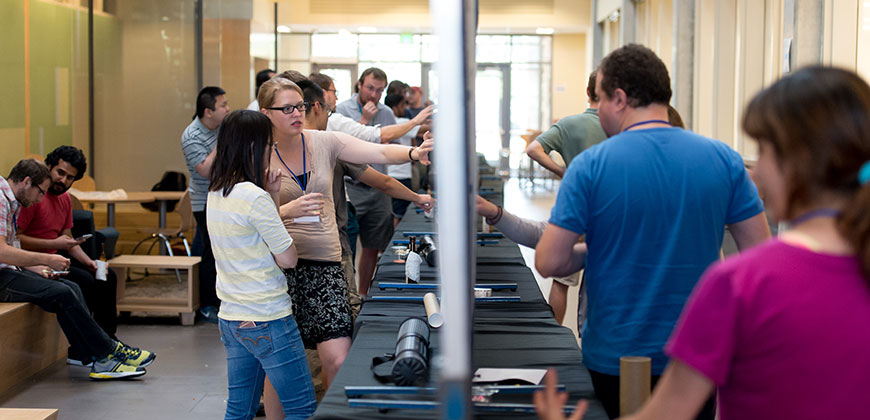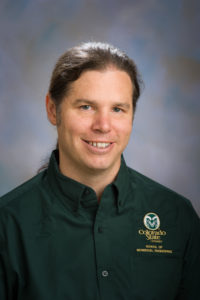
Students and faculty at Colorado State University’s 2016 q-bio Summer School gather in the Scott Building atrium for a poster session.
Quantitative biology is a growing field, and CSU is leading efforts to expand its reach.
The q-bio Summer School and Conference is an annual, two-week event held on three campuses simultaneously (University of California, San Diego; University of New Mexico and Colorado State University), followed by the one-week q-bio Student Symposium and q-bio Conference. Next year’s q-bio program will be hosted centrally at CSU, led by Brian Munsky, assistant professor in the College of Engineering’s Department of Chemical and Biological Engineering.

The 10th q-bio Summer School and Conference ended in late July, and this year’s program offered eight scientific themes on different campuses. At CSU, students studied single-cell gene regulation, cancer dynamics and complex biological dynamics. Other areas offered elsewhere: computational synthetic biology, biomolecular simulations, cell signaling and viral dynamics.
At the end of the two weeks, students attended the q-bio Student Symposium and q-bio Conference at Vanderbilt University. These international programs featured keynote speakers, more research and poster presentations, and opportunities for networking and fostering research collaborations.
Aiming to advance predictive modeling of cellular regulation, decision-making, formation of response and other information processing phenomena, the q-bio Summer School is a coveted destination attracting applicants from over 130 graduate programs worldwide and admitting 70 graduate students and postdoctoral researchers each year.
Filling a gap in quantitative biology education
The program was started in 2007 at Los Alamos National Laboratory and was geared toward an interdisciplinary audience, including engineers, computer scientists, biochemists, biologists and physicists. Among attendees that first year was Munsky, now a CSU faculty member in chemical and biological engineering. A strong advocate of the program ever since, Munsky brought q-bio with him to CSU when he arrived in 2014.
“q-bio fills a crucial gap in education for modern quantitative biology,” Munsky said. “Until universities catch on and start programs focused on this multidisciplinary area, students need access to a community of innovators in computational and experimental biology.”
The future of the program
As q-bio continues to fill an education gap, Munsky and others are working to build up the program. In 2017, the entire event will be held centrally on CSU’s campus, and Munsky has sought funding from the National Institutes of Health to support and expand the program for future years.
“In the next few years, we hope to grow the q-bio Career Development program to offer interactive online training, undergraduate-focused programs, and professional outreach and counseling services,” he said.
More than 400 students have gone through the q-bio program in the past decade, and like Munsky, many have achieved leadership roles in this growing research discipline.
Among other positive programmatic outcomes is a community-written textbook to be published by MIT Press in late 2017, an effort led by Munsky. “We reached out to graduates of the program, and everyone I contacted was eager to contribute. We collected over 30 chapters written by past q-bio participants, most of whom now hold their own faculty positions.”